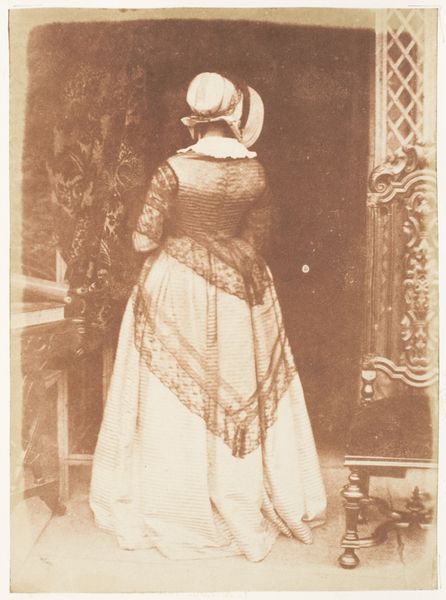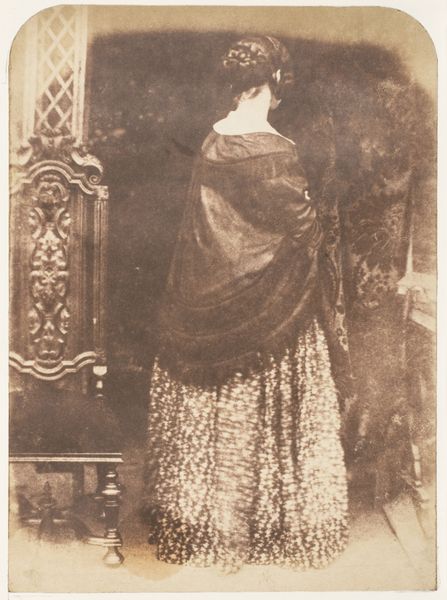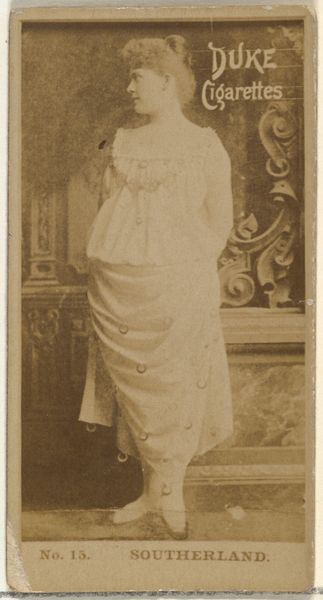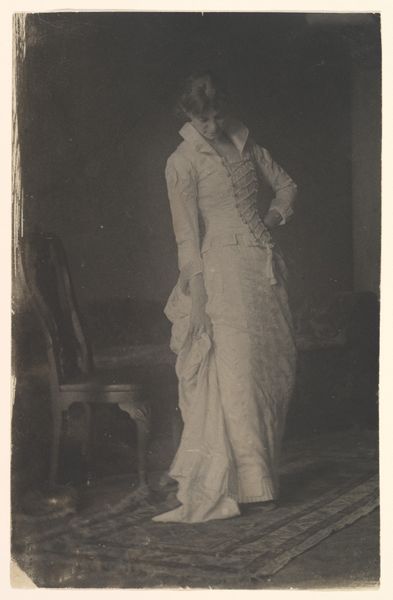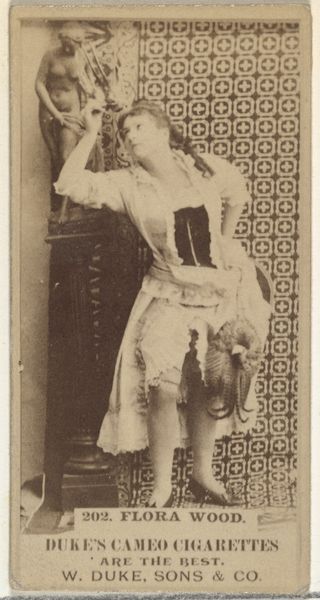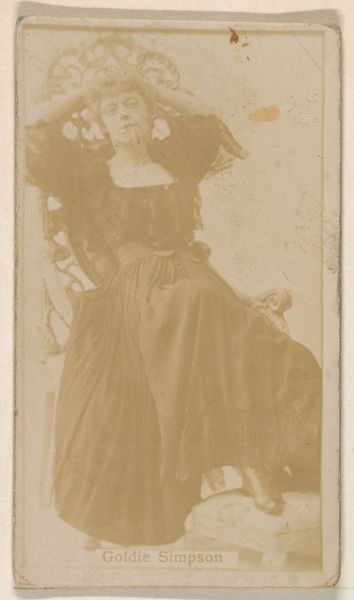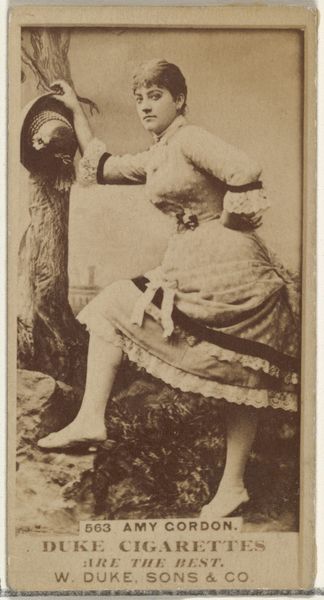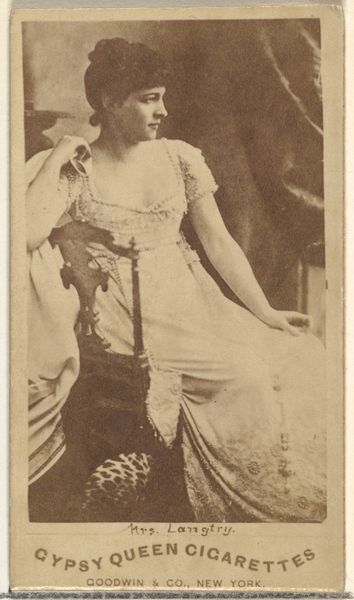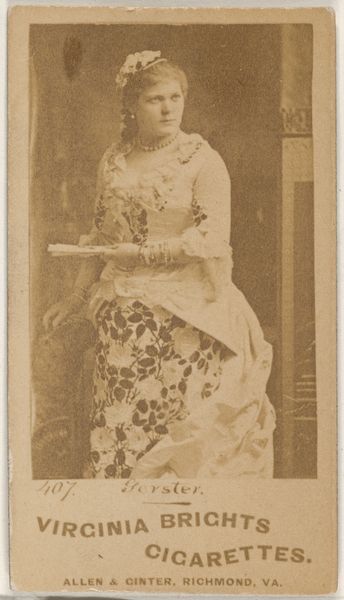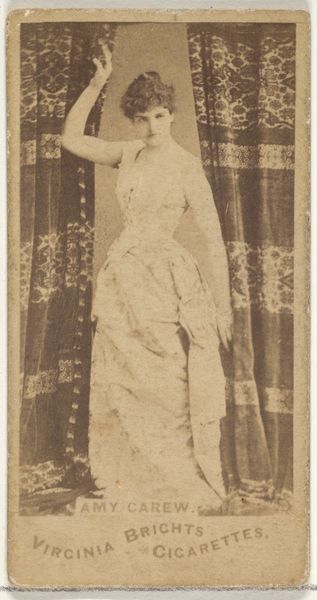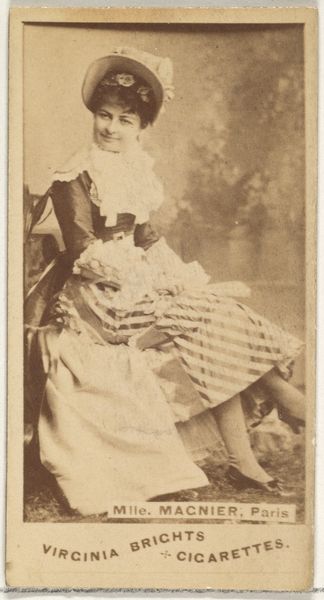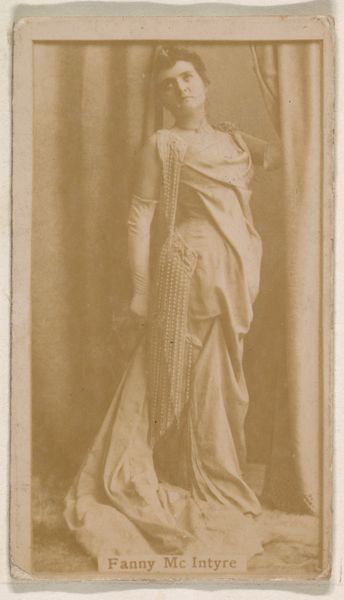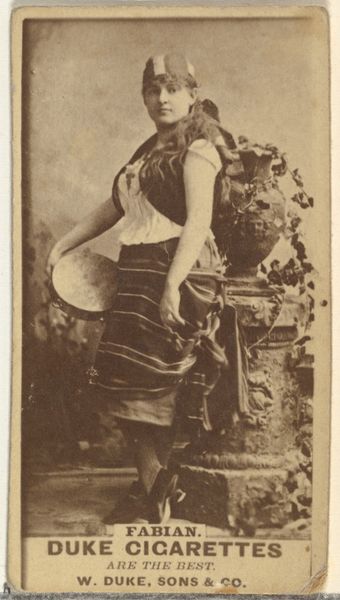
daguerreotype, photography
#
portrait
#
daguerreotype
#
figuration
#
photography
#
romanticism
Dimensions: 19.9 x 15 cm (7 13/16 x 5 7/8 in.)
Copyright: Public Domain
Editor: This is "Lady Ruthven," a daguerreotype created sometime between 1843 and 1847 by Hill and Adamson. It’s at the Met. She seems almost hesitant, caught in a moment of reflection rather than posed for a portrait. What strikes you when you look at it? Curator: I see a powerful statement about the early politics of photography. Think about who had access to portraiture before the daguerreotype. Painted portraits were exclusive to the upper classes. Photography, even in its infancy, began to democratize image-making. This is no longer just about representation, but participation. Who are images *for*, and who gets to control them? Editor: So, you’re saying this image isn’t just about Lady Ruthven, but about shifting social power? Curator: Precisely. Consider also the context of Scotland at this time; there were huge shifts going on regarding industrialisation and the Highland Clearances. Looking again at this image, the choice of showing her from the back feels significant too – as though her personal identity isn’t quite the point. How might she be read as representative of something bigger? Editor: Maybe it has something to do with this very thoughtful choice to depict the sitter with their back turned to the spectator? The portrait somehow refrains from allowing us any insight, which is unexpected for this type of work. What does it reveal by hiding, perhaps? Curator: Excellent point. By averting her gaze, the artist avoids direct engagement, creating distance. Is it distance that makes the portrait about ideas of "woman", not *this* woman? Editor: This conversation has really shifted my perspective; it’s made me consider how portraits participate in larger social and historical narratives. I need to give some thought to how visual composition reflects broader political considerations. Curator: Absolutely, it's always essential to look beyond the immediate image. There is a wealth of material once we see the photographic portrait as social commentary.
Comments
No comments
Be the first to comment and join the conversation on the ultimate creative platform.
